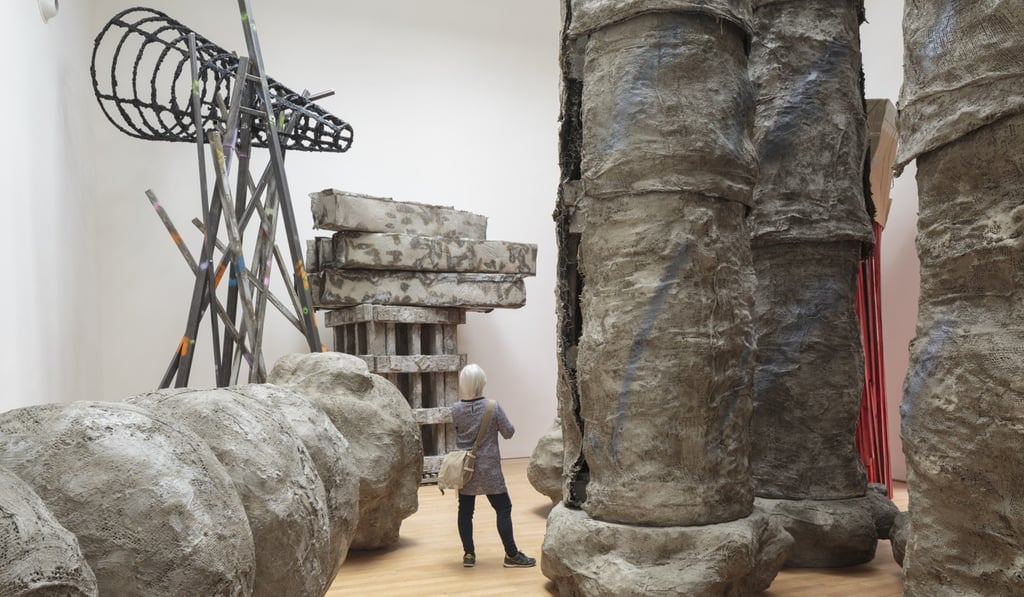For Phyllida Barlow, Britain’s representative at Venice Biennale 2017, fame was 40 years coming
Barlow hit the big time after retiring from four decades of teaching; now showing in Venice, the sculptor talks about young artists’ rush for stardom and how she’s never sought sympathy as a mother

At the 17th-century Palazzo Pisani a Santo Stefano, huge mounds of shaved ham and salami were dotted around the baroque interior, blazing red and orange lights fuelling carnivorous urges. Meanwhile, elegantly dressed VIPs shoved fistfuls of meat into their mouths on the way to the overflowing buffet table, inhibition loosened by the unlimited flow of cocktails, while a desperate crowd had gathered in the stairwell, begging the bouncers to be let in. It was a bacchanal without the sex.


That doesn’t mean her art lacks ambition. She often works on an architectural scale: huge, lumbering, superficially crude installations using everyday materials such as salvaged planks, cardboard, fabric and polystyrene. What she has put in the British Pavilion rebels against its staid, safe, neoclassical shell: precarious-looking columns, an intervening wall made from salvaged boards, a balcony inside a room. So perhaps the party is quite apt. Her show is called “Folly”, after all, and it is about losing control.